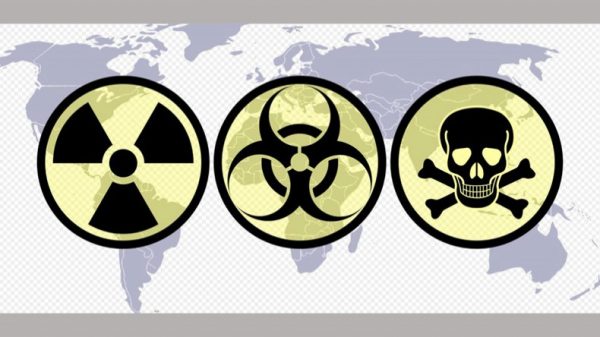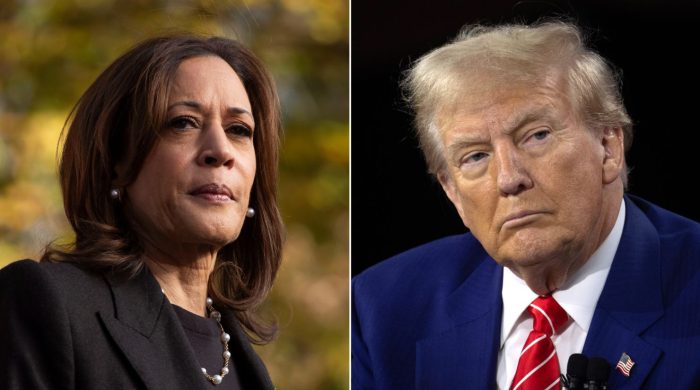All at once mainstream pundits push for WW III

- Update Time : Tuesday, November 1, 2022
- 96 Time View

MAINSTREAM punditry in the latter half of 2022 is rife with op-eds arguing that the US needs to vastly increase military spending because a world war is about to erupt, and they frame it as something that happens to the US as though its own actions would have nothing to do with it.
As though it would not be the direct result of the US-centralised empire continually accelerating towards that horrific event while refusing every possible diplomatic off-ramp due to its inability to relinquish its goal of total unipolar, planetary domination.
The latest example of this trend is an article titled ‘Could America Win a New World War? — What It Would Take to Defeat Both China and Russia’ published by Foreign Affairs, a magazine that is owned and operated by the supremely influential think tank the Council on Foreign Relations.
‘The United States and its allies must plan for how to simultaneously win wars in Asia and Europe, as unpalatable as the prospect may seem,’ writes Thomas G Mahnken, adding that in some ways ‘the United States and its allies will have an advantage in any simultaneous war’ on those two continents.
Mahnken doesn’t claim a world war against Russia and China would be a walk in the park; he also argues that in order to win such a war the US will need to — you guessed it — drastically increase its military spending.
‘The United States clearly needs to increase its defense manufacturing capacity and speed,’ Mahnken writes. ‘In the short term, that involves adding shifts to existing factories. With more time, it involves expanding factories and opening new production lines. To do both, Congress will have to act now to allocate more money to increase manufacturing.’
But exploding US weapons spending is still inadequate, Mahnken argues, saying that ‘the United States should work with its allies to increase their military production and the size of their weapons and munitions stockpiles’ as well.
Mahnken says this world war could be sparked ‘if China initiated a military operation to take Taiwan, forcing the United States and its allies to respond,’ as though there would be no other options on the table besides launching into nuclear-age World War Three to defend an island next to the Chinese mainland that calls itself the Republic of China.
He writes that ‘Moscow, meanwhile, could decide that with the United States bogged down in the western Pacific, it could get away with invading more of Europe,’ demonstrating the bizarre Schrödinger’s cat Western propaganda paradox that Putin is always simultaneously (A) getting destroyed and humiliated in Ukraine and (B) on the cusp of waging hot war with NATO.
Again, this is just the latest in an increasingly common genre of mainstream Western punditry.
In ‘The skeptics are wrong: The US can confront both China and Russia,’ The Washington Post’s Josh Rogin wags his finger at Democrats who think aggressions against Russia should be prioritised and Republicans who think that military and financial attention should be devoted to China, arguing por que no los dos? Why not both?
In ‘Could The US Military Fight Russia And China At The Same Time?’, Robert Farley answers in the affirmative, writing that ‘the immense fighting power of the US armed forces would not be inordinately strained by the need to wage war in both theaters’ concluding that ‘the United States can fight both Russia and China at once… for a while, and with the help of some friends.’
In ‘Can the US Take on China, Iran and Russia All at Once?’ Bloomberg’s Hal Brands answers that it would be very difficult and recommends escalating in Ukraine and Taiwan and selling Israel more advanced weaponry to get a step ahead of Russia, China and Iran respectively.
In ‘International Relations Theory Suggests Great-Power War Is Coming,’ the Atlantic Council’s Matthew Kroenig writes for Foreign Policy that a global democracies-versus-autocracies showdown is coming ‘with the United States and its status quo-oriented democratic allies in NATO, Japan, South Korea, and Australia on one side and the revisionist autocracies of China, Russia, and Iran on the other,’ and that aspiring foreign policy experts should adjust their expectations accordingly.
When they’re not arguing that World War Three is coming and we must all prepare to fight it and win, they’re arguing that a global conflict is already upon us and we must begin acting like it, as in last month’s New Yorker piece ‘What if We’re Already Fighting the Third World War with Russia?’
These Beltway swamp monster pontifications are directed not just at the general public but at government policymakers and strategists as well, and it should disturb us all that their audiences are being encouraged to view a global conflict of unspeakable horror like it’s some kind of natural disaster that people don’t have any control over.
Every measure should be taken to avoid a world war in the nuclear age. If it looks like that’s where we’re headed, the answer is not to ramp up weapons production and create entire industries dedicated to making it happen, the answer is diplomacy, de-escalation and detente.
These pundits frame the rise of a multipolar world as something that must inevitably be accompanied by an explosion of violence and human suffering, when in reality we’d only wind up there as a result of decisions that were made by thinking human beings on both sides.
It doesn’t have to be this way. There’s no omnipotent deity decreeing from on high that we must live in a world where governments brandish Armageddon weapons at each other and humanity must either submit to Washington or resign itself to cataclysmic violence of planetary consequence. We could just have a world where the peoples of all nations get along with each other and work together toward the common good rather than working to dominate and subjugate each other.
As Jeffrey Sachs recently put it, ‘The single biggest mistake of president Biden was to say ‘the greatest struggle of the world is between democracies and autocracies’. The real struggle of the world is to live together and overcome our common crises of environment and inequality.’
We could have a world where our energy and resources go toward increasing human thriving and learning to collaborate with this fragile biosphere we evolved in. Where all our scientific innovation is directed toward making this planet a better place to live instead of channeling it into getting rich and finding new ways to explode human bodies.
Where our old models of competition and exploitation give way to systems of collaboration and care. Where poverty, toil and misery gradually move from accepted norms of human existence to dimly remembered historical record.
Instead we’re getting a world where we’re being hammered harder and harder with propaganda encouraging us to accept global conflict as an unavoidable reality, where politicians who voice even the mildest support for diplomacy are shouted down and demonised until they bow to the gods of war, where nuclear brinkmanship is framed as safety and de-escalation is branded as reckless endangerment.
We don’t have to submit to this. We don’t have to keep sleepwalking into dystopia and Armageddon to the beat of manipulative sociopaths. There are a whole lot more of us than there are of them, and we’ve got a whole lot more at stake here than they do.
We can have a healthy world. We’ve just got to want it badly enough. They work so hard to manufacture our consent because, ultimately, they absolutely do require it.
Consortiumnews.com, October 28. Caitlin Johnstone is a journalist, poet, and utopia prepper and her work is entirely reader-supported.

























